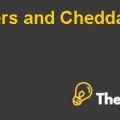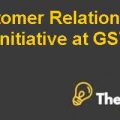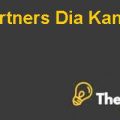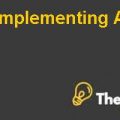
Question 1: The launch of a new wireless content technology
Phase I
The data provided in the case is insufficient to calculate a relevant percentage mark-up but by using assumptions, the mark-up is calculated for the subscription package. The randomly drawn prices for the cell phone and subscription package combined were $400 and $275 offered in a 1000 participant group out of which $400 was offered to 500 people out of which 20% felt drawn towards buying the offer whereas the 500 participants who were offered the same package for $275. The anticipation increased to 30%, which means 100 people were willing to buy the product if the price was $400 from the 500 participant group and 150 people were willing to buy the product if the price was $275 from the 500 participant group, this data can be used to perform sensitivity analyses; which gives the data that with $2.5 decrease in price there is increase in willingness to buy of 1 participant.
This data can be used to make relevant pricing. To calculate the Markup percentage, it was assumed that the price of the total offer given had a 70% element of the price of the cell phone whereas a 30% element of the subscription package. Similarly, the cost of the each product was not provided; therefore, this makes it impossible to calculate. the markup, hence, continuing the 70:30 ratio is to be assumed a 30% markup is charged on cost to conduct the pricing of each product giving a markup of $20 where the price of the subscription package is $120 derived from $400, similarly a markup $14 is charged on cost where the price of the subscription package is $83 derived from the price of $275.
This survey is conducted to judge what price should be set for the offer of the subscription package in the market. It is completely irrelevant to the core objective of the survey; a survey should have a undoubtedly clear goals that should be known to the person by conducting the survey and transformed it to the person who is giving the survey. This element was completely lacking in this survey as the survey was providing a combined price of an offer that is cell phone plus subscription package with this survey. The right price for the subscription package cannot be determined since the participants are giving their views on the offer and what price they will be paying for it takes the attention away from the subscription package.
It felt like there was no preliminary research conducted to support the survey, which was the reason the price quoted for the offer was derived at the time of the survey rather than by conducting it through research.
There should be a motivating element, which would draw people towards the conduct of the survey and would actually lift them to listen to the person by conducting the survey. The use of the cell phone in the offer was the motivating element by using a popular phone, or by just having a good looking person conducting the survey will entice people to come up and let their thoughts be heard.
There was no distinction made while breaking the 1000 people group into two groups of 500, to have a better understanding of the market a survey should be pure and not mixed up with all types and kinds of people a clear separation should be made so if a company needed to make a price discrimination strategy they would have the relevant data regarding it.
Phase II
The data provided in the phase – II consists of the own- price elasticity of demand holding -0.75 along with a standard error of 1.2.
The own-price elasticity is defined as the impact of any price change as per in percentage on the retrospective goods quantity demanded as per in percentage. It is always represented in negative.
It is represented as:
Whereas standard error represents the chances of error during sampling or collection of data it is represented in a quantitative form.
The own price elasticity represents the fact that that there is a -0.75 variation between the variation in demand and variation in price that means if there is a change in price of 13.3% it will lead to an change in quantity of 10%, if there is a change in price of 26.6% there will be a change in quantity of 20% and if there is a change in price of 40% there will be a change in demand of 30% but there is a change of an error in this data of about 1.2 that is the standard error. This means there is a window of 3.33% of change in price, the second window of 6.66% and the third window of 9.99% before demand decrease ............................
This is just a sample partial case solution. Please place the order on the website to order your own originally done case solution.












